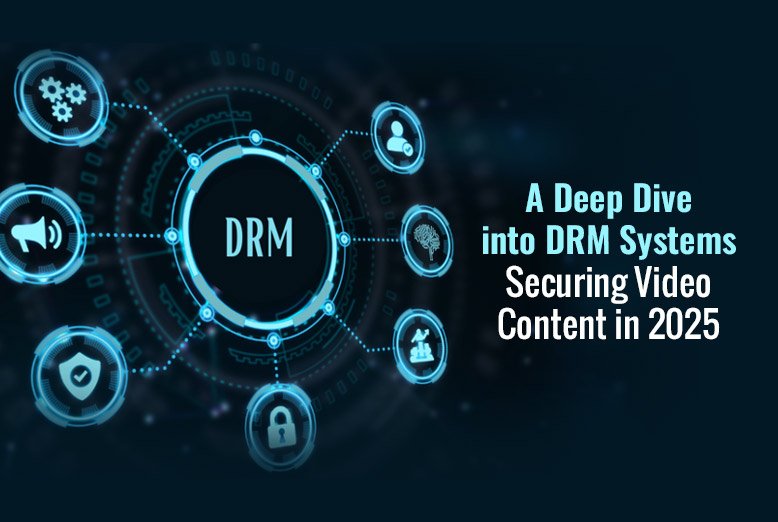Digital Rights Management (DRM) is a technology which assists in safeguarding the content of video against reproduction or distribution without authorization. It regulates the way in which digital videos are accessed and utilized by the users and the creators and distributors of digital videos are compensated. In 2025, DRM is as necessary as ever due to the rapid growth of video streaming, as well as the appearance of new devices and platforms in which content can be shared easily in an illegal way. Effective DRM prevents the piracy of movies, shows and live events by making the industry prosper. The collaboration between companies evidenced by solutions such as wiseplay Huawei and the integration of DRM shows how companies are collaborating to deliver secure and high-quality video experiences to users across the board.
The Best Practices for Implementing DRM in 2025
Balance between safeguarding digital assets heavily and delivering seamless user interactions will be crucial when implementing DRM technology. Best practices help secure content whilst keeping users reasonably informed and satisfied with support provided.
1. Understand Your Audience and Content Type: You need to define your audience and the desired type of content to be secured before selecting a DRM solution. Various types of content might require different protection measures. Also, a bit of knowing your audience can go a long way since there will be users who desire easy access and others who want a high level of security. Understanding your users will help you select a DRM system that can balance protection and user convenience. As an illustration, in the event that your audience primarily relies on mobile gadgets, the DRM must perform well on tablets and smartphones. When your content is professional, then they may welcome stronger protection to guarantee value.
2. Choose a Flexible and Scalable DRM System: Your DRM system ought to scale with your business. The DRM must be able to accommodate the expansion as you expand your content or expand your users without any issues. Moreover, also flexibility is essential. Your DRM must be compatible with other devices and systems, such as Windows, macOS, Android, iOS, and smart TVs. In this manner, your readers will be capable of viewing content at any location without flaws. A too inflexible or platform-limited DRM will restrict your potential viewership and may lead to technical issues. Also, a scalable DRM system refers to the fact that you would not need to change systems as your business expands, which saves time and money
3. Make User Experience a Priority: DRM must secure your content; however, it must not turn the usage of your product to be confusing. When struggling to access the content they have paid, users might abandon your service or seek illegal copies. A good DRM is a compromise between security and usability. It ought to enable users to play, read, or utilize content without numerous additional actions. Reducing the frequency of user authentication or internet connection is one mechanism of enhancing user experience. As an example, offline access under DRM would be useful to individuals who travel or have restricted access to the internet.
4. Regularly Update and Monitor Your DRM System: Hacking techniques and technology continue to evolve and therefore you need to update your DRM system regularly. The security weaknesses are addressed, and performance is improved with a regular update. By keeping track of the performance of your DRM in the actual field, you would be able to identify issues before they escalate into headaches. In addition to updates, you can test your DRM with actual users to locate obscure bugs and improvement opportunities. There are instances when hackers discover new methods of breaching DRM, and therefore, it is worth being prepared and vigilant. It continuous effort maintains your content secure and your users satisfied.
5. Ensure Transparency and Fair Use Policies: Users like truthfulness with regards to what DRM is and why it exists. Be sure to articulate clearly your DRM policies; how it secures the content, and what are its boundaries. It enhances trust and eliminates frustration. You should also permit fair use, like content backup or access across several devices, provided that it does not affect your business. Moreover, clear fair use rules are beneficial in striking the balance between protection and user rights. When users believe they have been treated fairly, then they will tend to obey your rules. Transparency also helps lessen complaints and legal actions since the users know what they are consenting to when they gain access to your content.
6. Integrate DRM with Other Security Tools: DRM is most effective as a component of an overall security strategy. It must be employed together with other controls such as encryption, user authentication and secure storage. Whereas DRM aims at regulating access and usage, these other technologies assist in safeguarding content against theft, copying and alteration. Putting them together means your content is difficult to decipher. Encryption, as an example, will secure the file itself, in case an unauthorized person obtains access. When these tools are combined and used in conjunction with DRM you end up with a much more secure system. The strategy will be more efficient compared to using DRM-only to prevent piracy or data.
7. Offer Support and Troubleshooting Help: Best DRM systems sometimes cause major headaches for certain users unfortunately. Your users need super quick help fast when such issues arise suddenly. Ensure your support crew comprehends DRM system functionality thoroughly and possesses skills needed for resolving frequently occurring issues quickly. Providing super helpful resources and contact info liberally demonstrates a genuine concern for user experience clearly. Poor support systems often exacerbate minor issues severely and may ultimately prompt users to abandon your product. Good customer service diminishes likelihood of pirated content usage stemming from frustration with original product offerings.
Final Words
To sum up, DRM is necessary to prevent the piracy and unauthorized access of video content. It further assists in delivering quality and trouble-free viewing to the users. Doverunner is an outstanding developer and provider of the premier DRM technology, which integrates the robust encryption, license management and multi-platform compatibility. Their technology does not only ensure that video content is secured against emerging threats but it is also easy to integrate and scale according to the size of the business. By selecting Doverunner, you can be sure that you have an ally in a professional specializing in content protection and ensuring maximum income generation where digital matters are becoming more complicated.
Also Read: Exploring DRM Software and Online Video Watermarking







